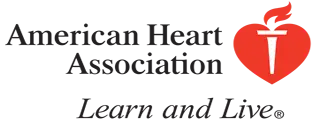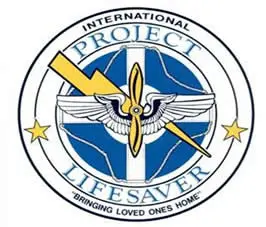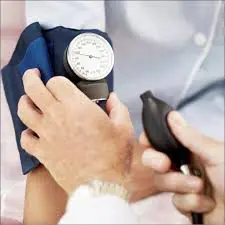Heart Attack Warning Signs
Chest discomfort
Most heart attacks involve discomfort in the center of the chest that lasts more than a few minutes, or that goes away and comes back. It can feel like uncomfortable pressure, squeezing, fullness or pain.
Shortness of breath
This may occur with or without chest discomfort.
Discomfort in other areas of the upper body
Symptoms can include pain or discomfort in one or both arms, the back, neck, jaw or stomach.
Other signs
This may include breaking out in a cold sweat, nausea or lightheadedness.
Stroke Warning Signs

Sudden Onset
- Numbness or weakness of the face, arm or leg, especially on one side of the body
- Confusion, trouble speaking or understanding
- Trouble seeing in one or both eyes
- Dizziness, trouble walking, loss of balance or coordination
- Severe headache with no known cause
These heart attack and stroke warning signs come from the American Heart Association.
Project Lifesaver

EJFR is now participating in Project Lifesaver, presented by the Jefferson County Sheriff’s Office. Project Lifesaver is a program to locate at-risk people who may wander, such as dementia or Alzheimer’s patients, Down’s Syndrome people or those with Autism.
The program uses state-of-the-art technology and an electronic bracelet to enable a specially trained team to track clients who wander off.
For more information on this program, read the Project Lifesaver Brochure.
Fall Prevention
Falls are the leading cause of unintentional death in the home. Approximately 30% of people 65 and older are involved in falls each year. By age 75, you’re three times more likely than the population at large to be injured or killed in a fall.
There are a number of potential implications when you fall. First and foremost, you may be injured. There could be long-term complications or disability, reduced mobility and possible loss of independence.
The good news is, you can do a number of things to reduce your chance of falling.
7 tips for fall prevention
Exercise regularly
Regular exercise makes you stronger, more flexible and better balanced.
Take your time
Slow and steady wins the race – particularly during the period after you awaken from sleep. Sit on the side of the bed until you can collect your thoughts before you begin to move.
Clear the way
Loose area rugs, electrical cords and items left on the floor are all trip hazards.
Slippery when wet
Bathrooms are a frequent location for falls. Wet tiles and bathtub bottoms can make for hazardous conditions. Put down non-slip rugs in the bathroom and rubber, sticking mats on the bottom of the bath tub to reduce the likelihood of slips and falls.
Throw rugs can throw you
If you want throw rugs, be sure not to place them on top of existing carpet. They are an easy trip hazard. On linoleum, hardwood or tile floors, use only throw rugs with sticky rubber backing…the kinds that won’t slip and slide on the floors.
Look out for yourself
Make sure your living area is well-lit. Poor lighting can lead to trips and falls. Place lamps on both sides of your bed within easy reach. Use night lights in your bedroom and bathroom for those occasional late-night trips.
Best foot forward
Avoid high heels and unstable shoes in favor of sensible flats and low-heel footwear.
For more information, check in with the Centers for Disease Control and Prevention.
AED Information
East Jefferson Fire Rescue receives frequent inquiries with respect to public access defibrillators. Scroll down for information on AED acquisition and legal information. Also listed here are three representatives for a variety of products that are on the market. We do not recommend one product over another, but provide this information as a starting point for your organization.
- -Medtronic: Tom Winstel: 253-651-7695 mobile, tom.winstel@medtronic.com
- -Cardiac Science Company: Jeffery Hoyt, 888-274-3342
- -Phillips Company, Enerspct Medical Solutions: Jennifer Voytko, 888-522-5574
Below is RCW 70.54.310 which explains your legal rights and obligations if your organization or business acquires a public access AED.
RCW 70.54.310 Semiautomatic external defibrillator — Duty of acquirer — Immunity from civil liability.
(1) As used in this section, “defibrillator” means a semiautomatic external defibrillator as prescribed by a physician licensed under chapter 18.71RCW or an osteopath licensed under chapter 18.57RCW.
(2) A person or entity who acquires a defibrillator shall ensure that:
(a) Expected defibrillator users receive reasonable instruction in defibrillator use and cardiopulmonary resuscitation by a course approved by the department of health;
(b) The defibrillator is maintained and tested by the acquirer according to the manufacturer’s operational guidelines;
(c) Upon acquiring a defibrillator, medical direction is enlisted by the acquirer from a licensed physician in the use of the defibrillator and cardiopulmonary resuscitation;
(d) The person or entity who acquires a defibrillator shall notify the local emergency medical services organization about the existence and the location of the defibrillator; and
(e) The defibrillator user shall call 911 or its local equivalent as soon as possible after the emergency use of the defibrillator and shall assure that appropriate follow-up data is made available as requested by emergency medical service or other health care providers.
(3) A person who uses a defibrillator at the scene of an emergency and all other persons and entities providing services under this section are immune from civil liability for any personal injury that results from any act or omission in the use of the defibrillator in an emergency setting.
(4) The immunity from civil liability does not apply if the acts or omissions amount to gross negligence or willful or wanton misconduct.
(5) The requirements of subsection (2) of this section shall not apply to any individual using a defibrillator in an emergency setting if that individual is acting as a good Samaritan under RCW 4.24.300.
[1998 c 150 § 1.]
